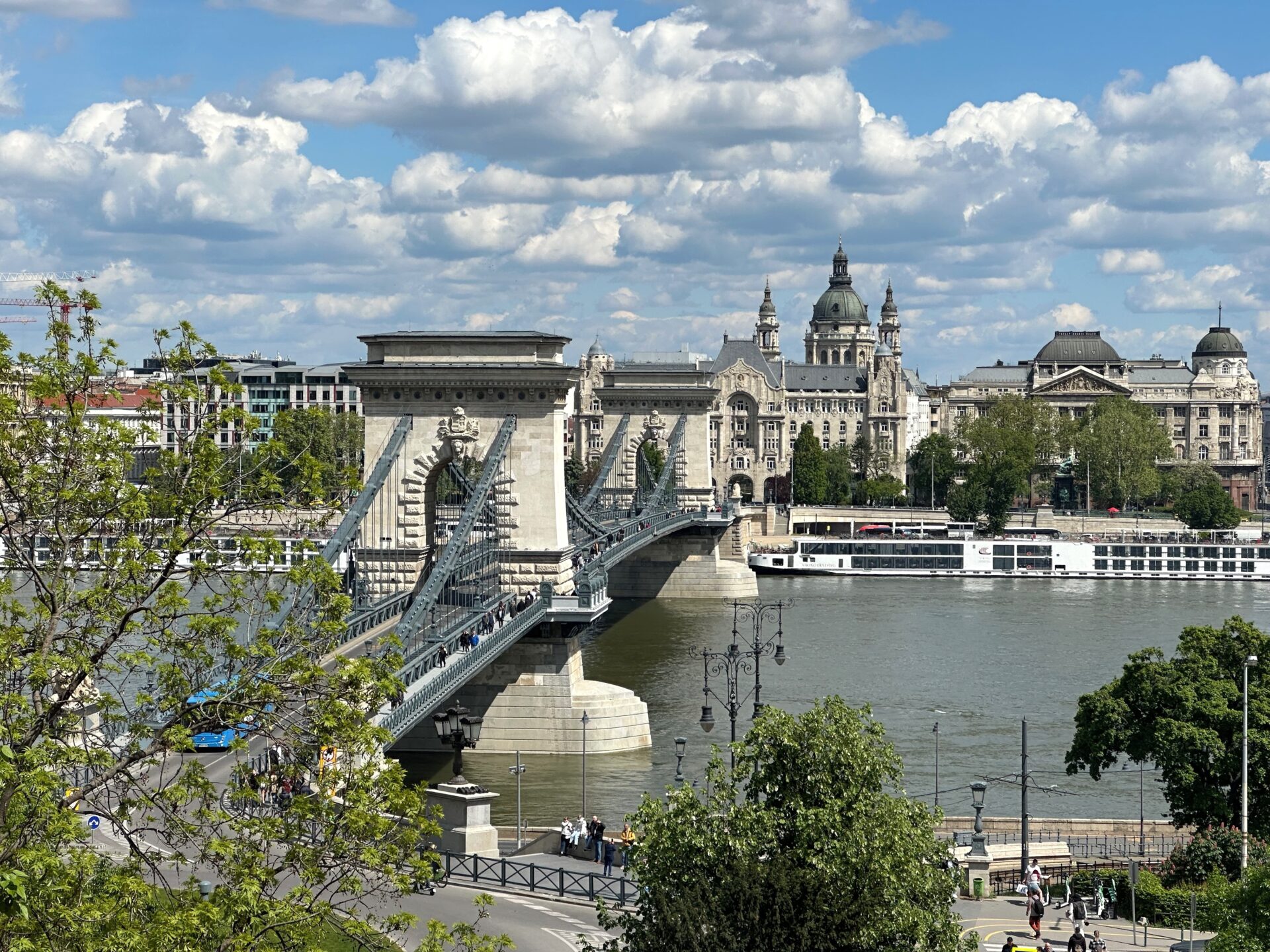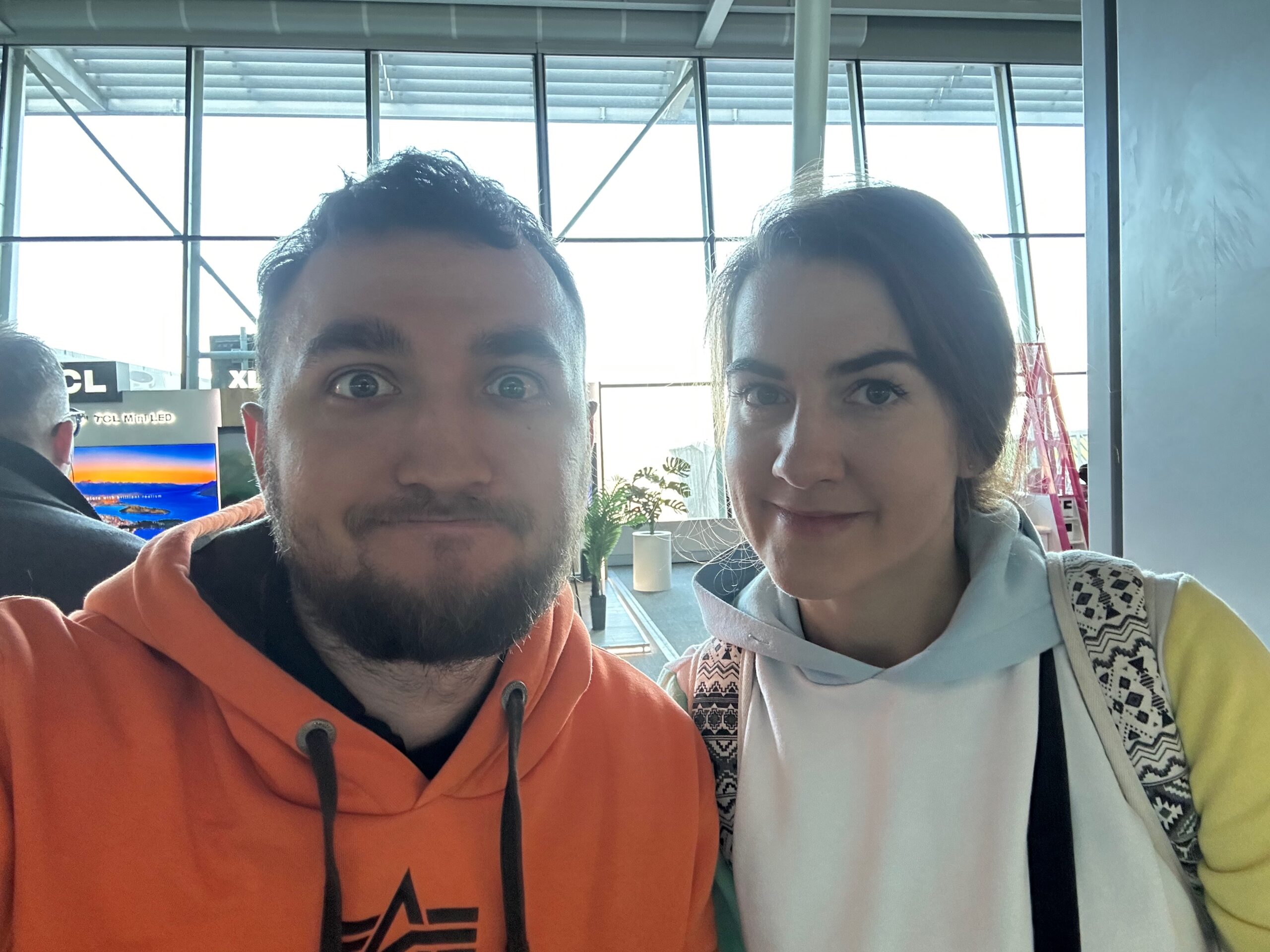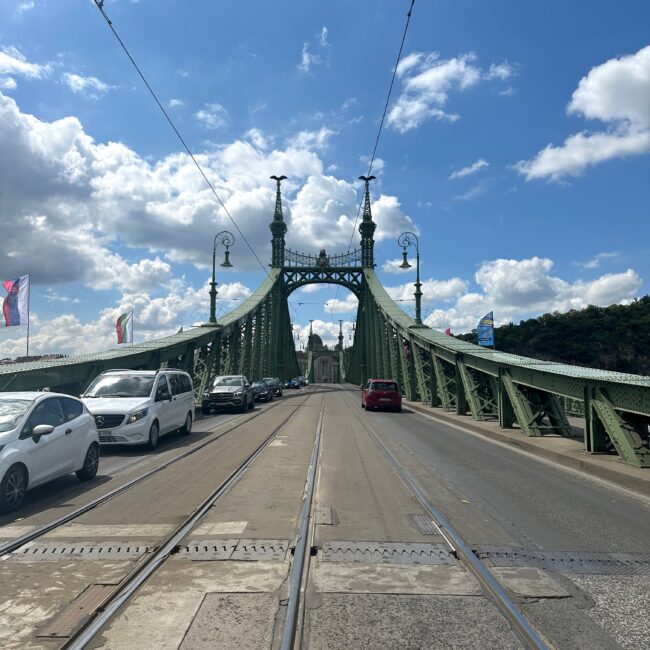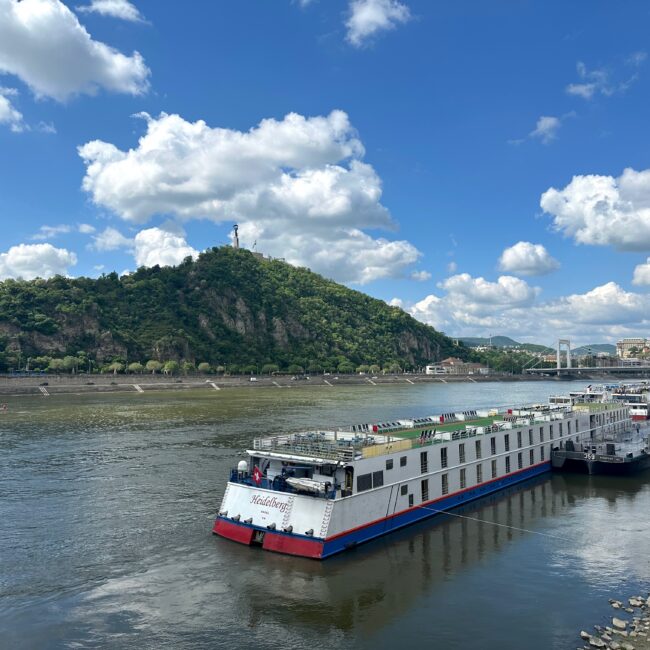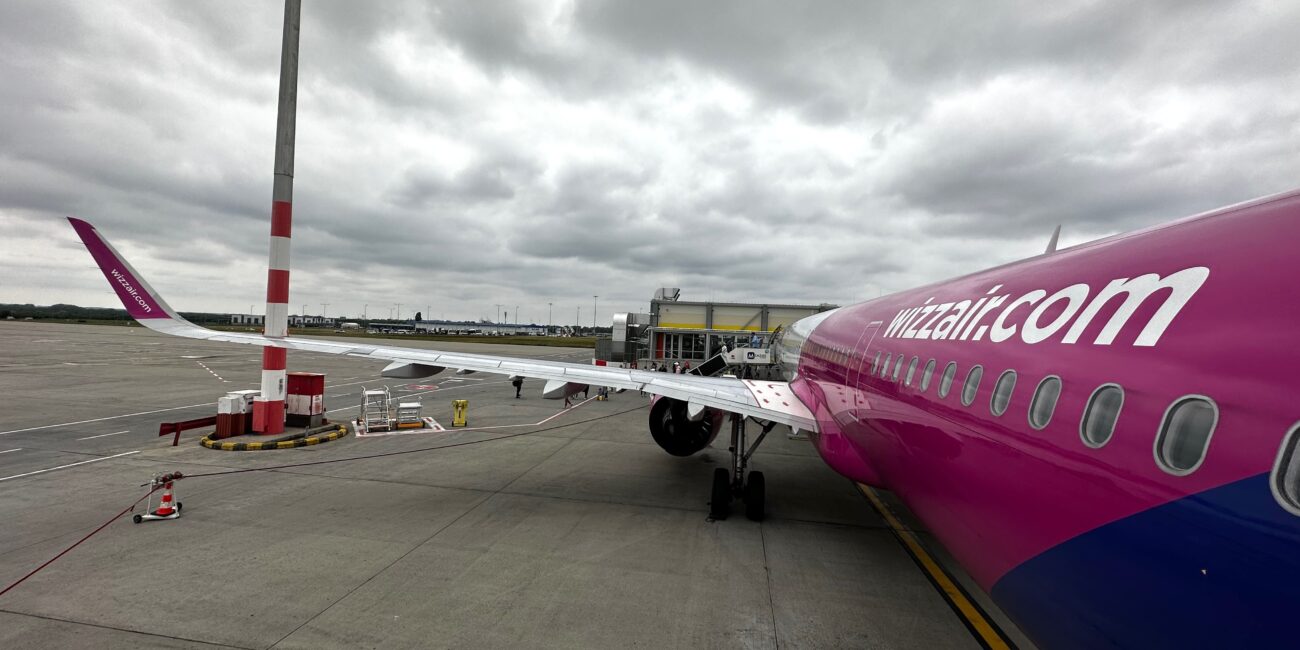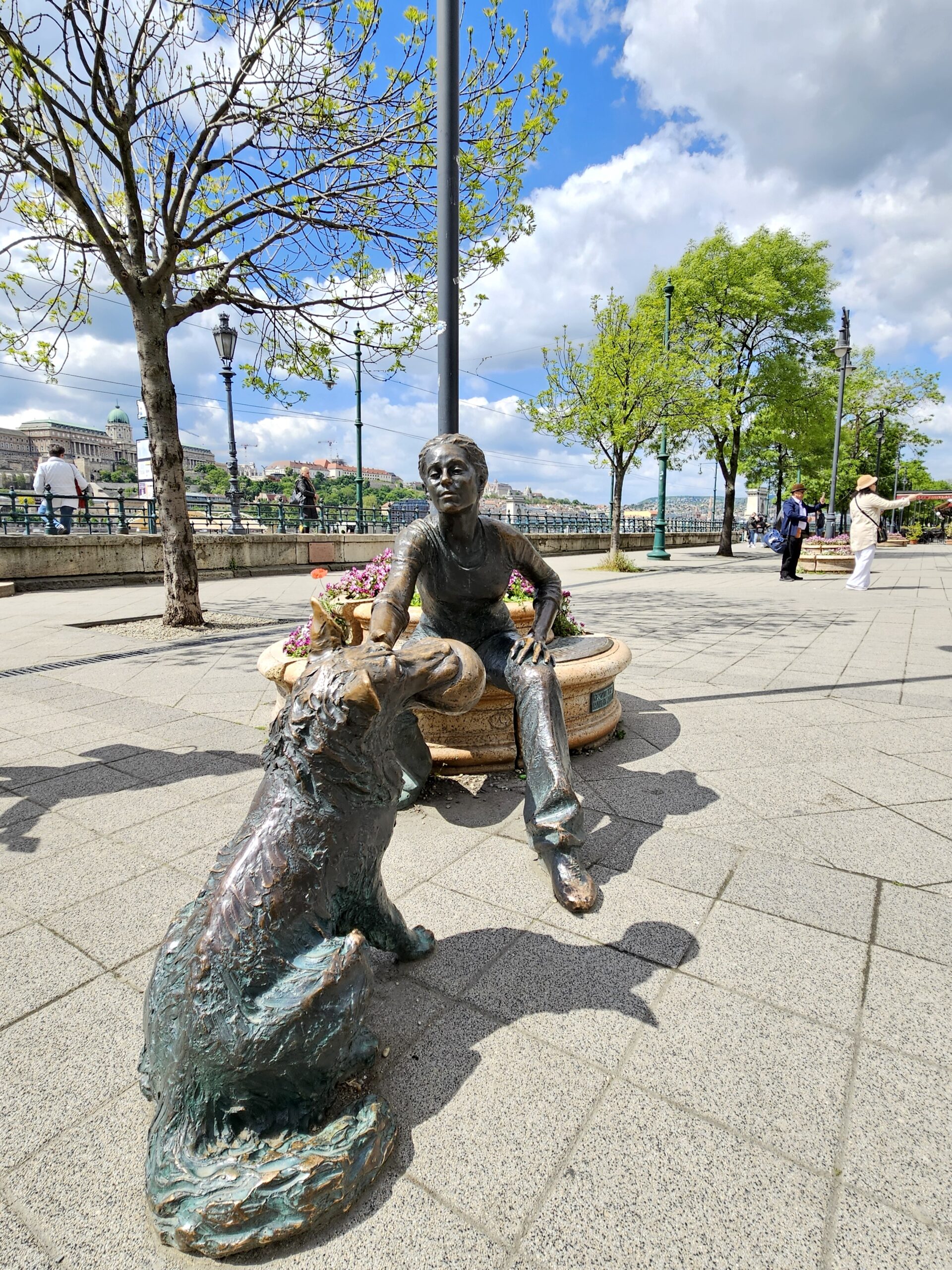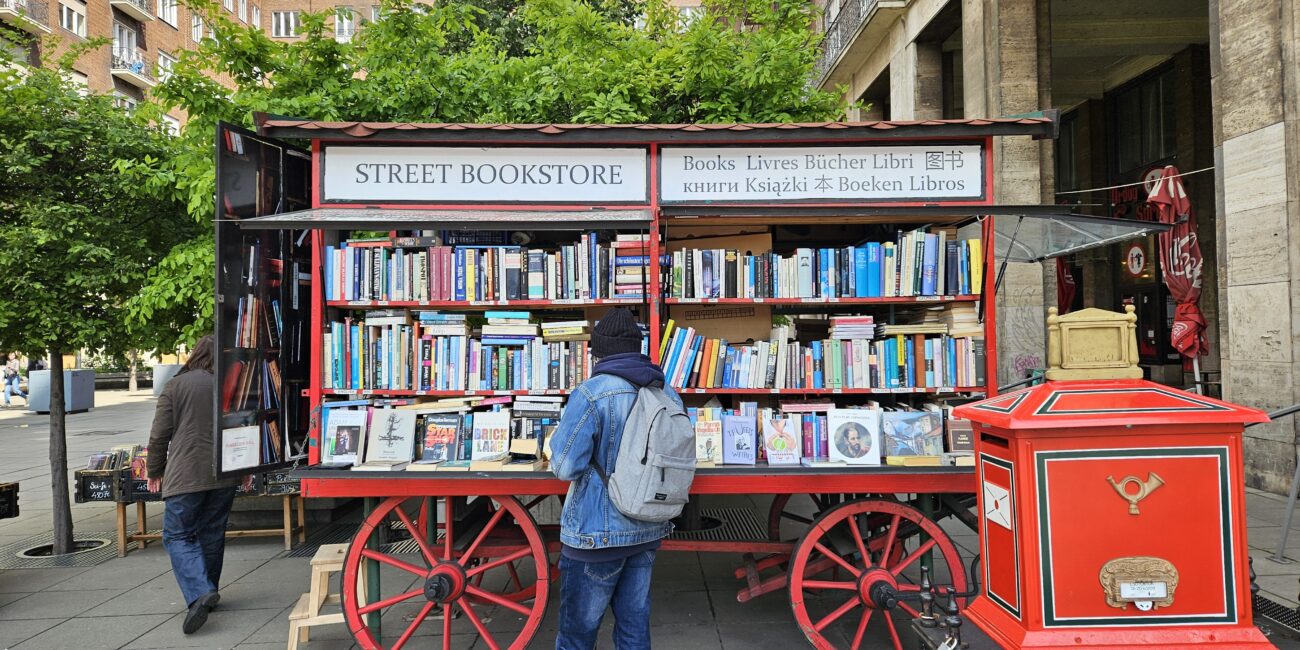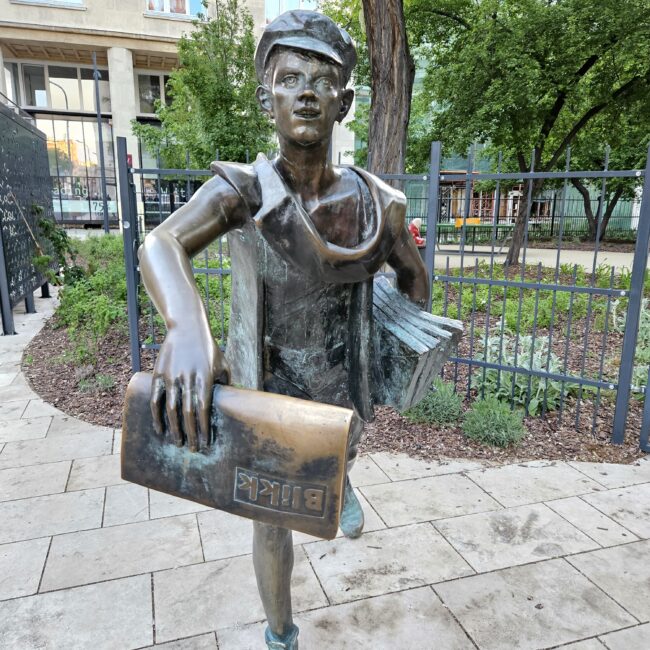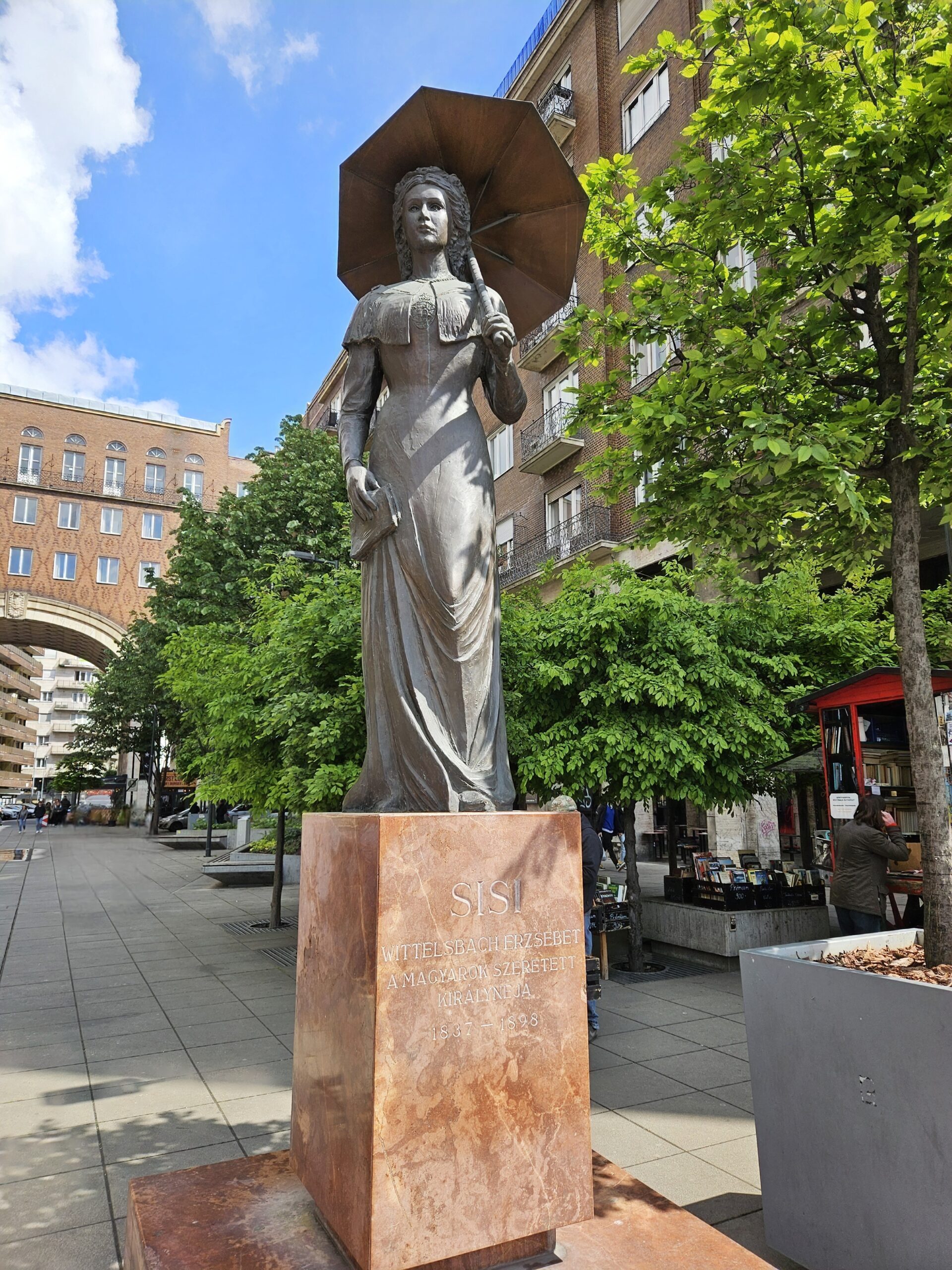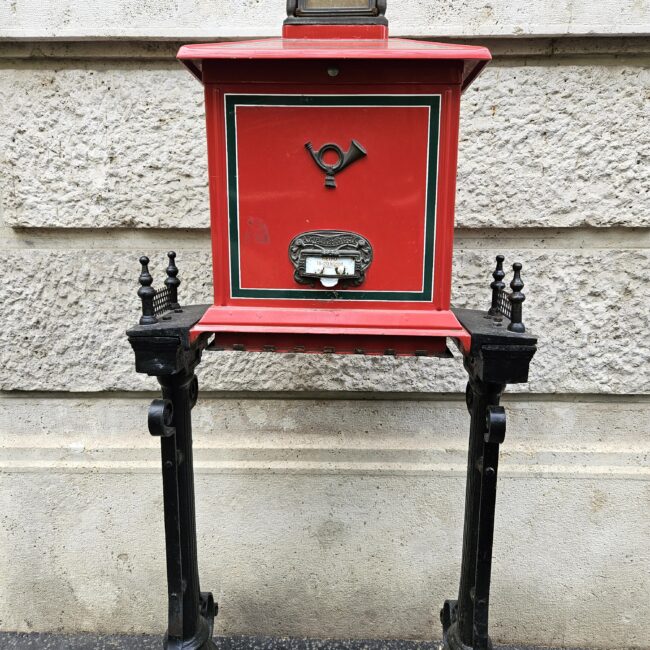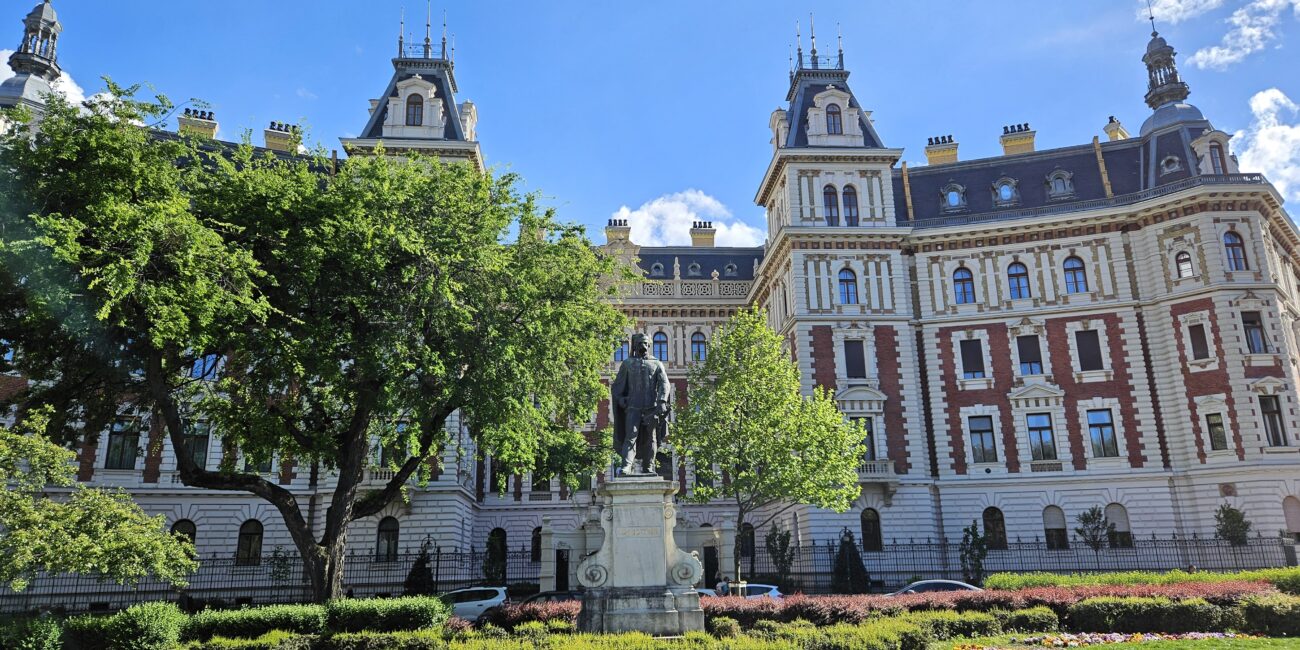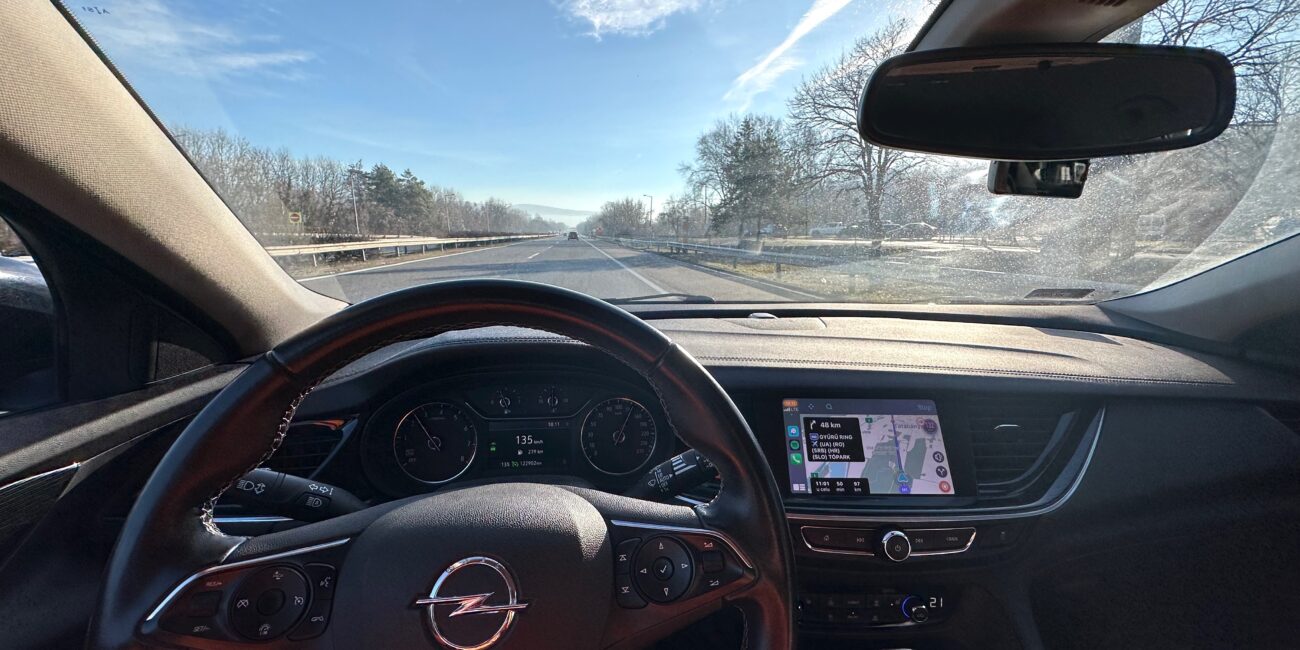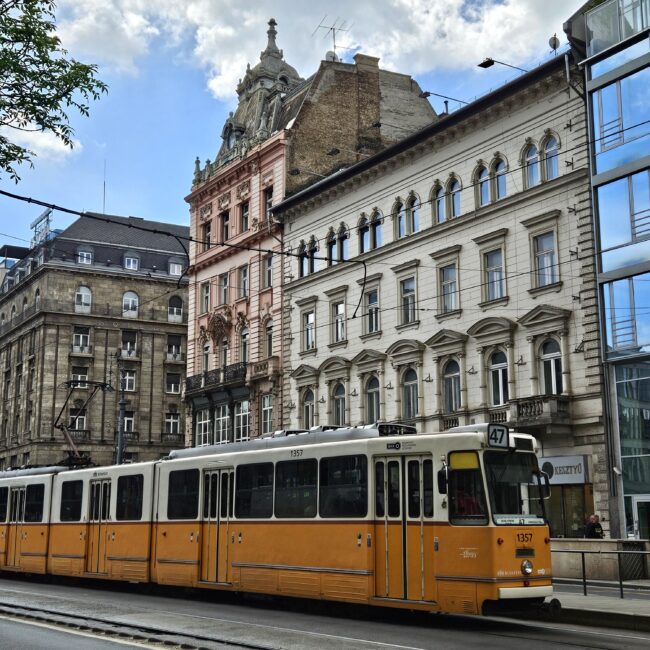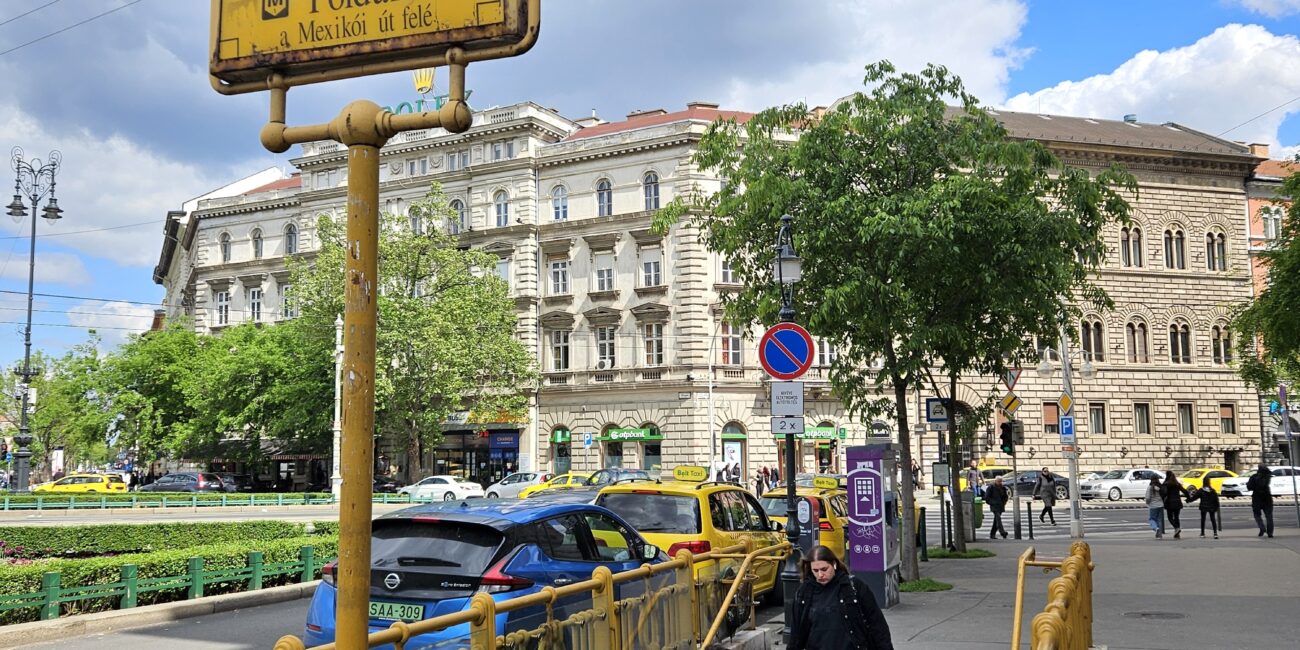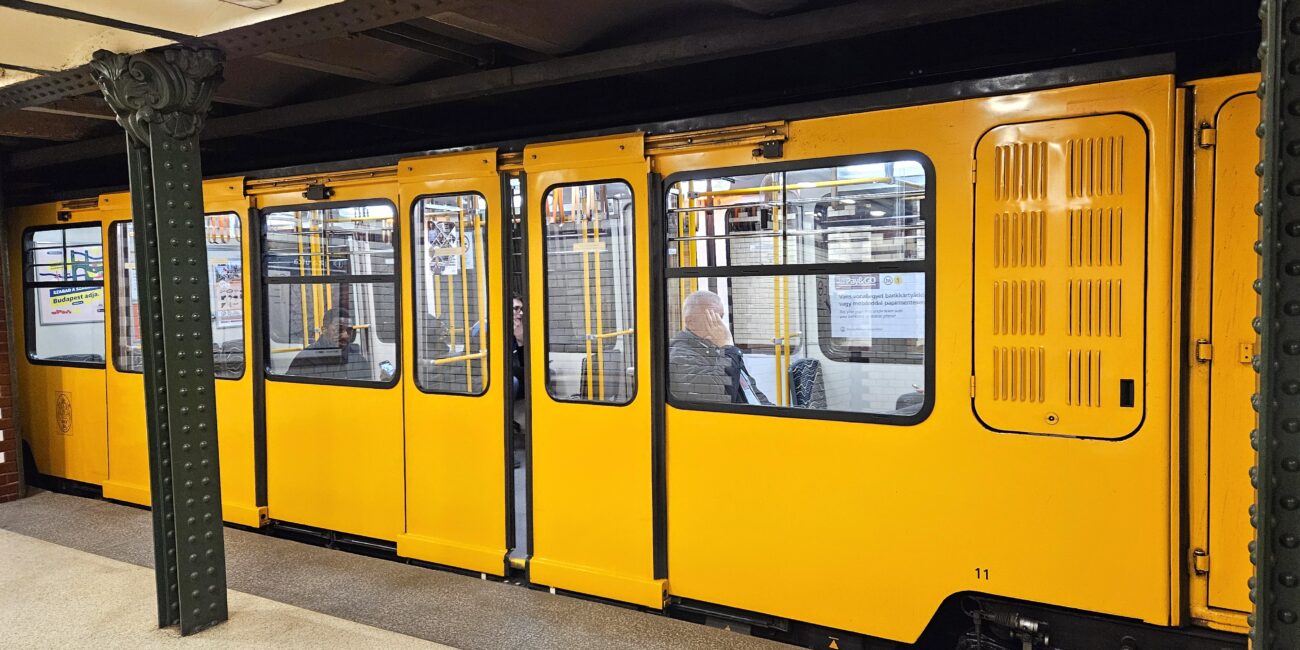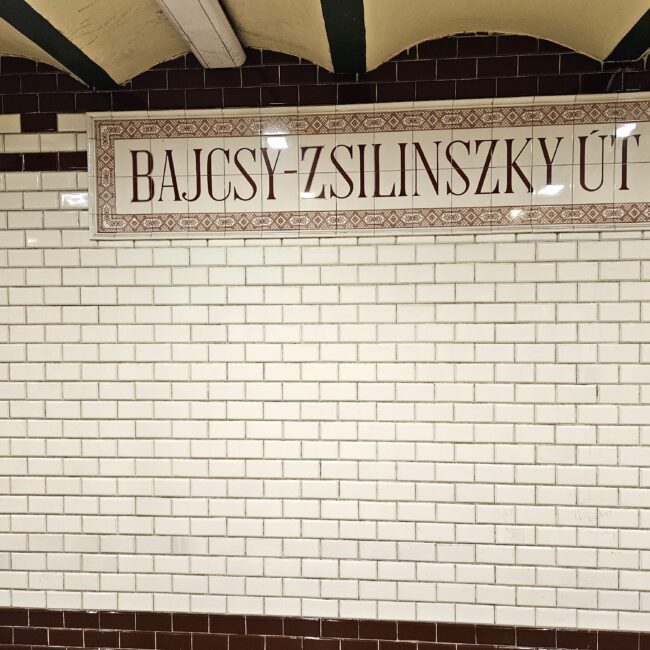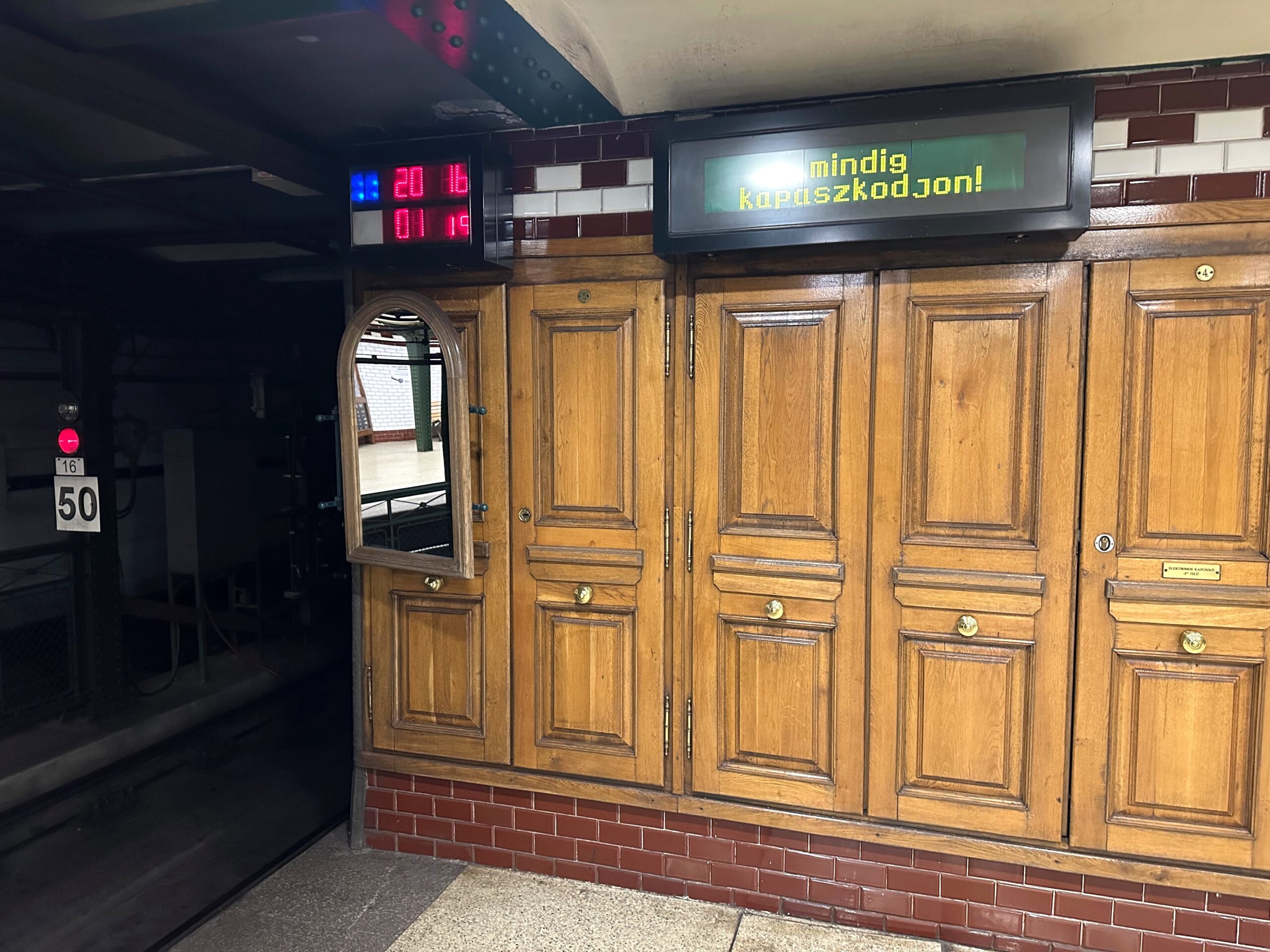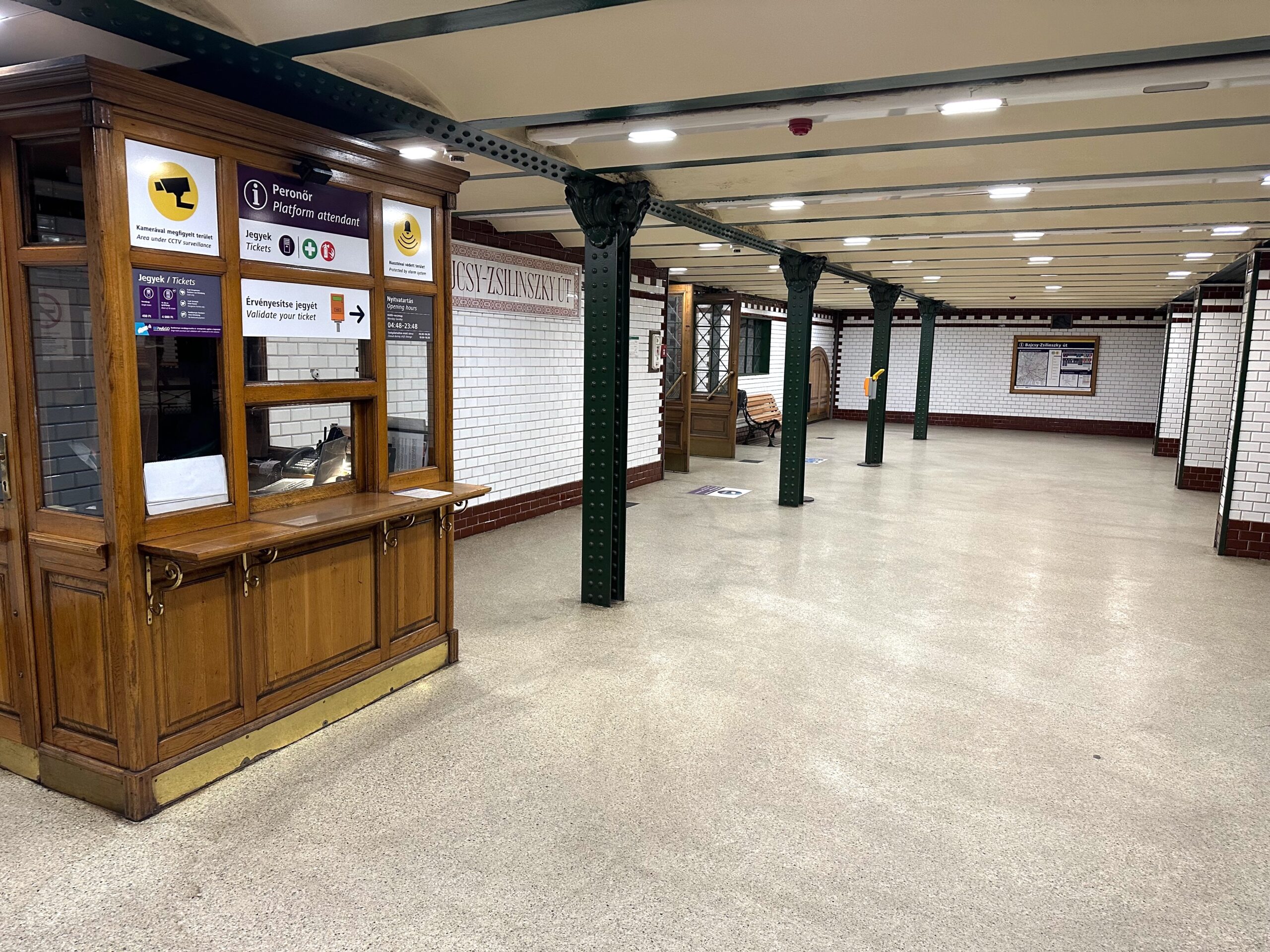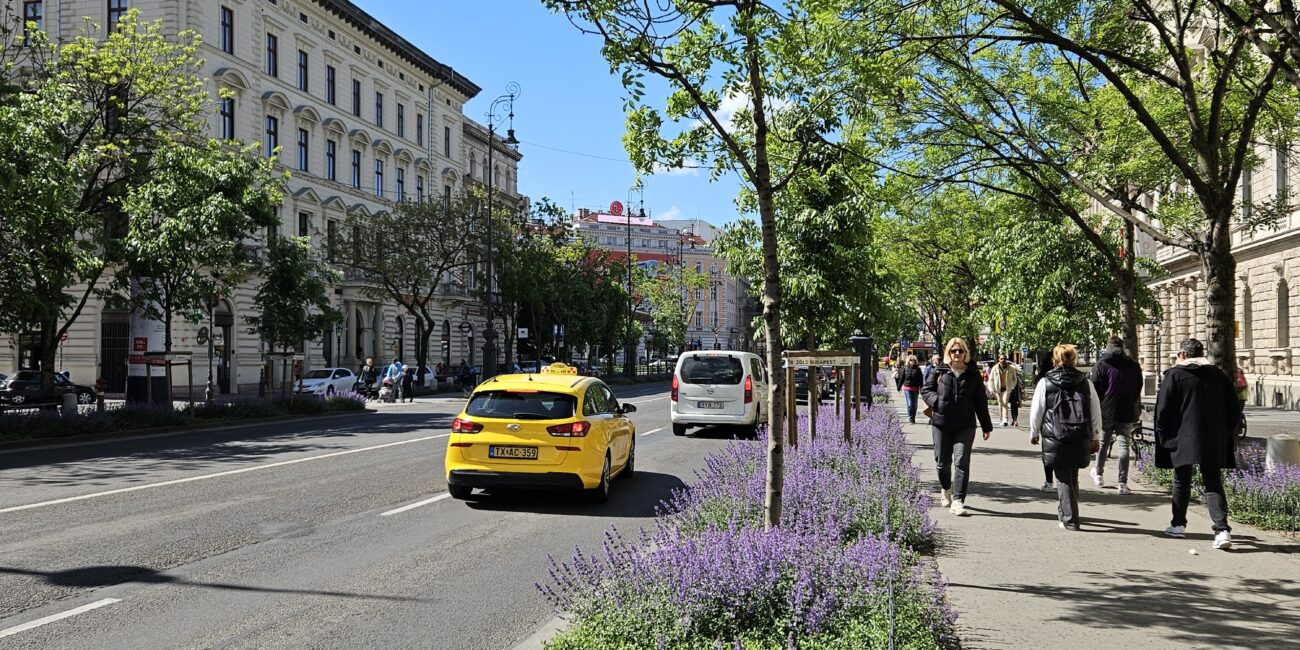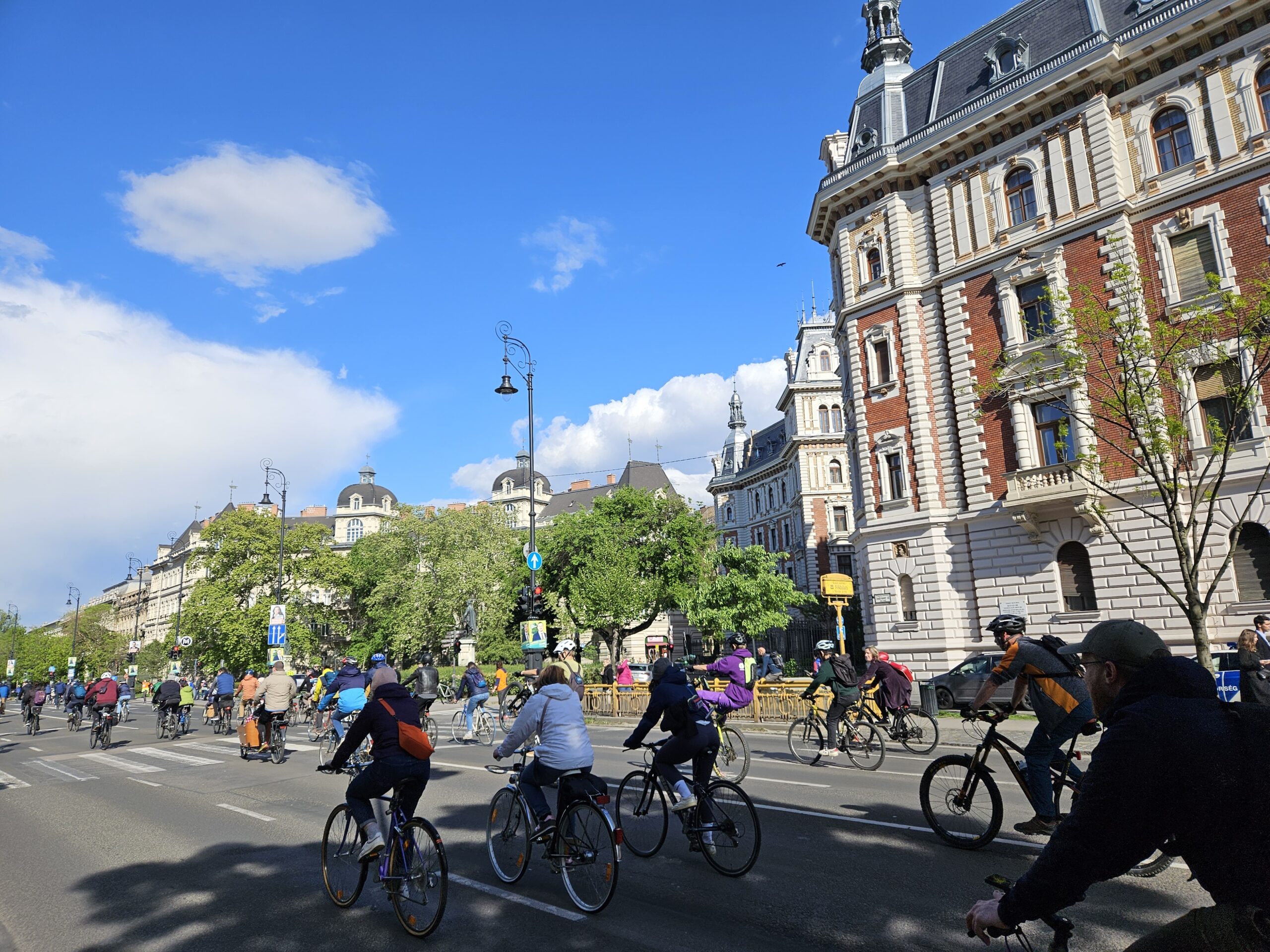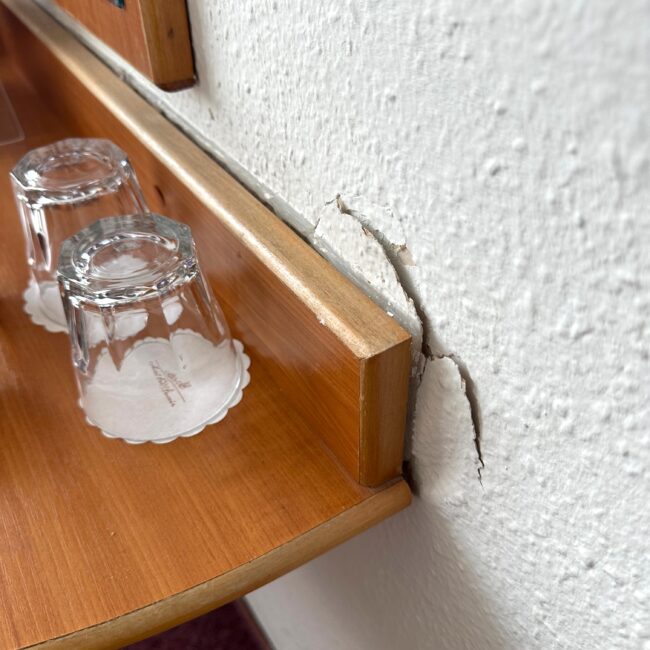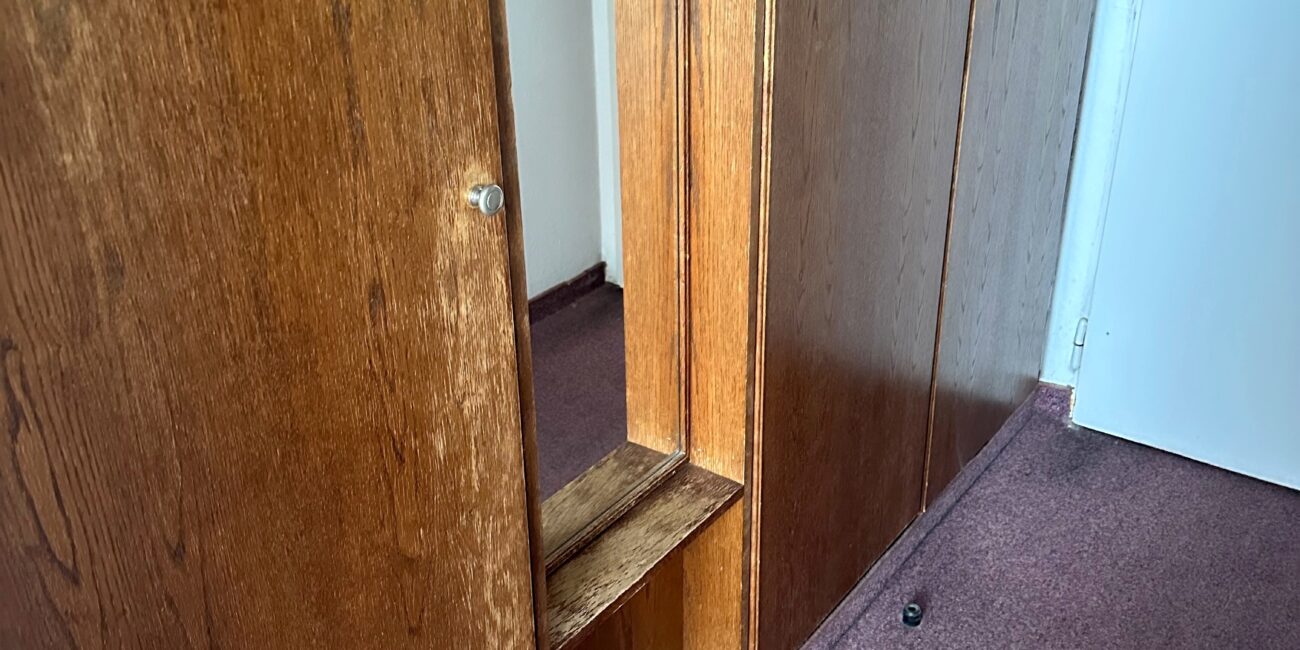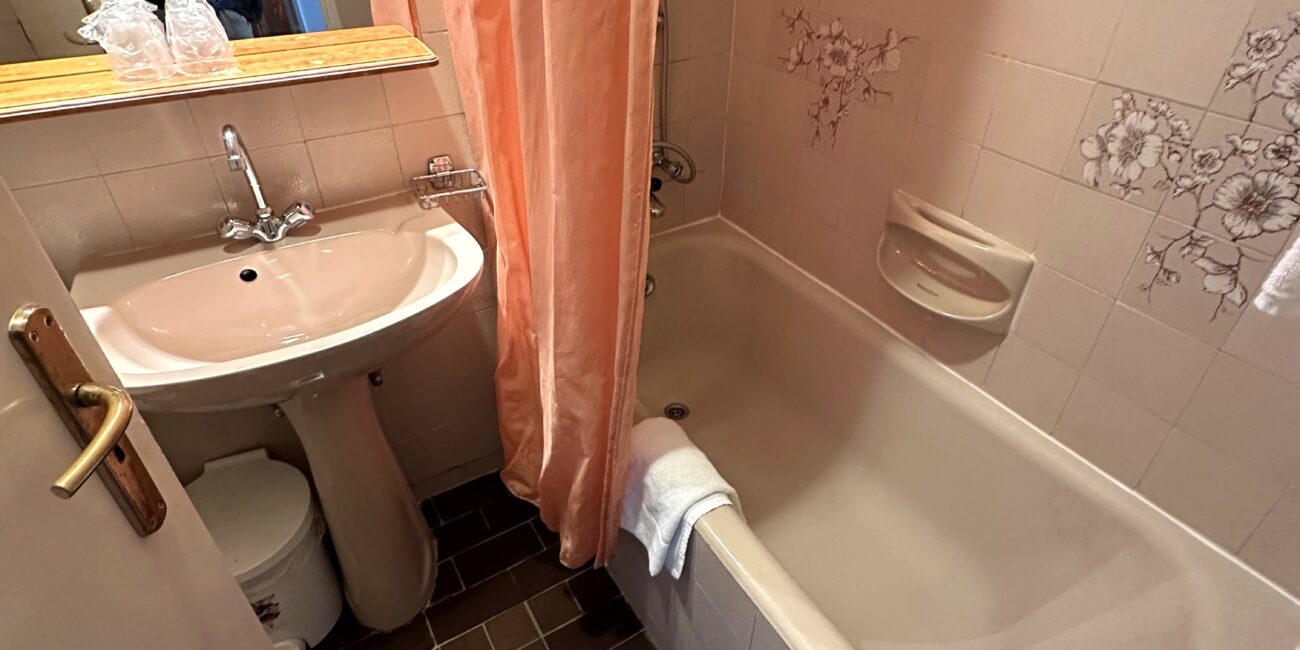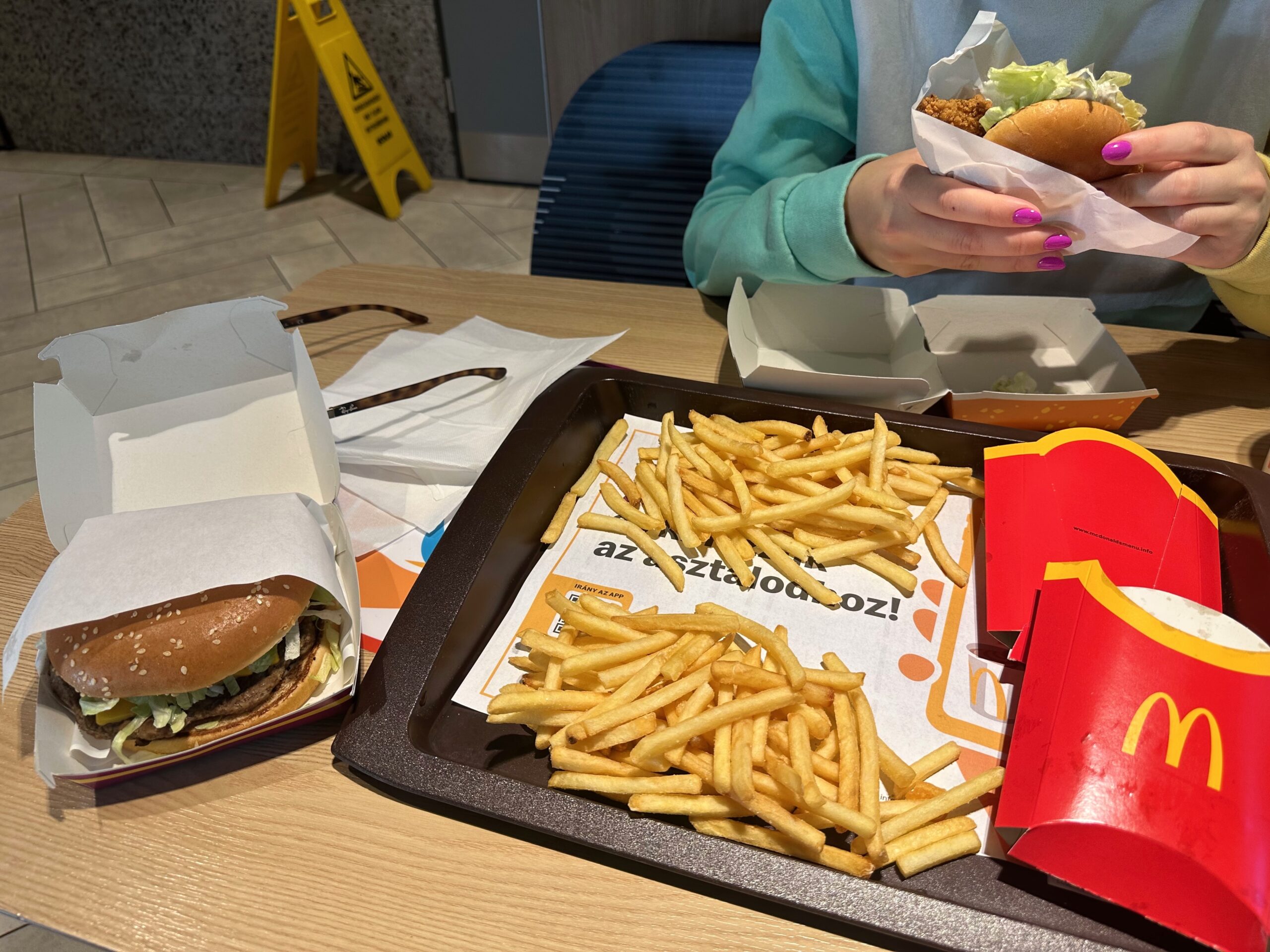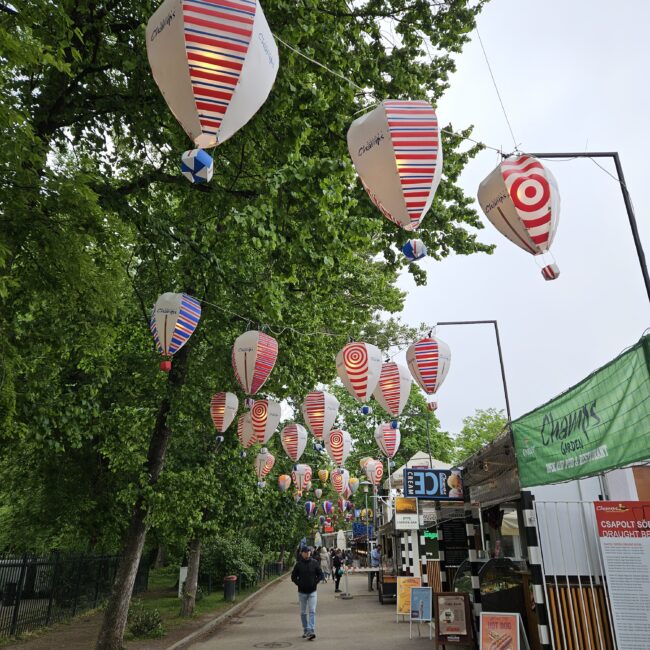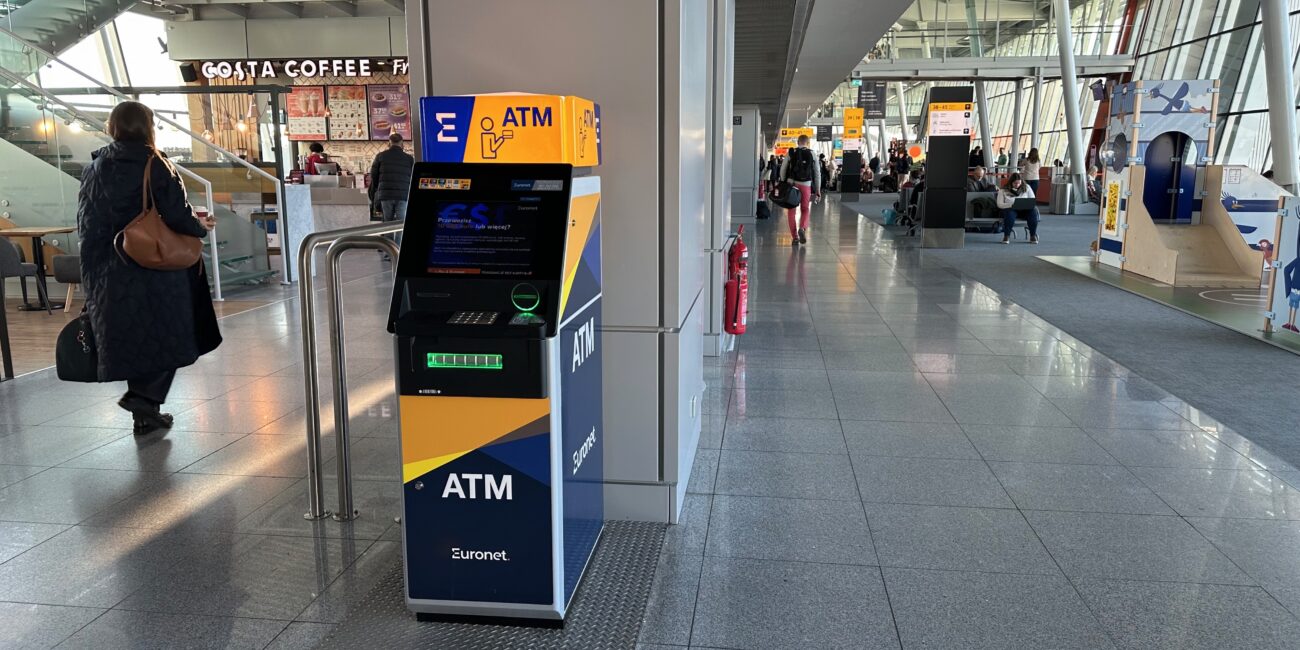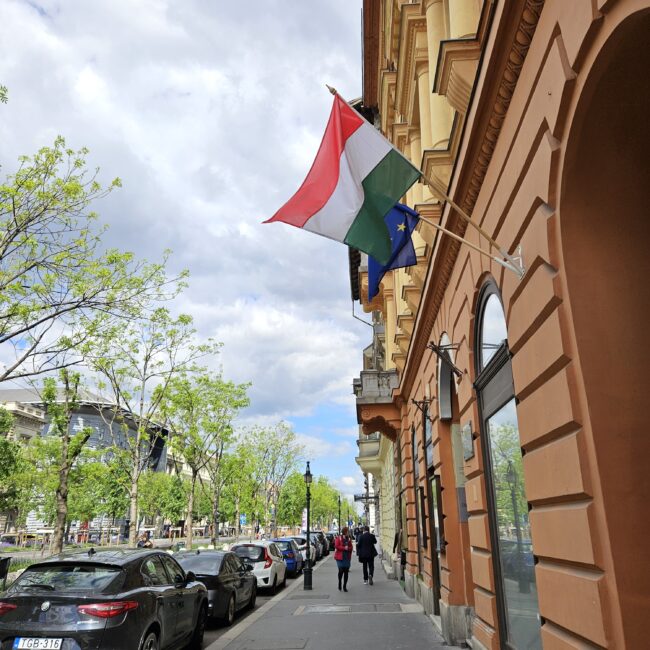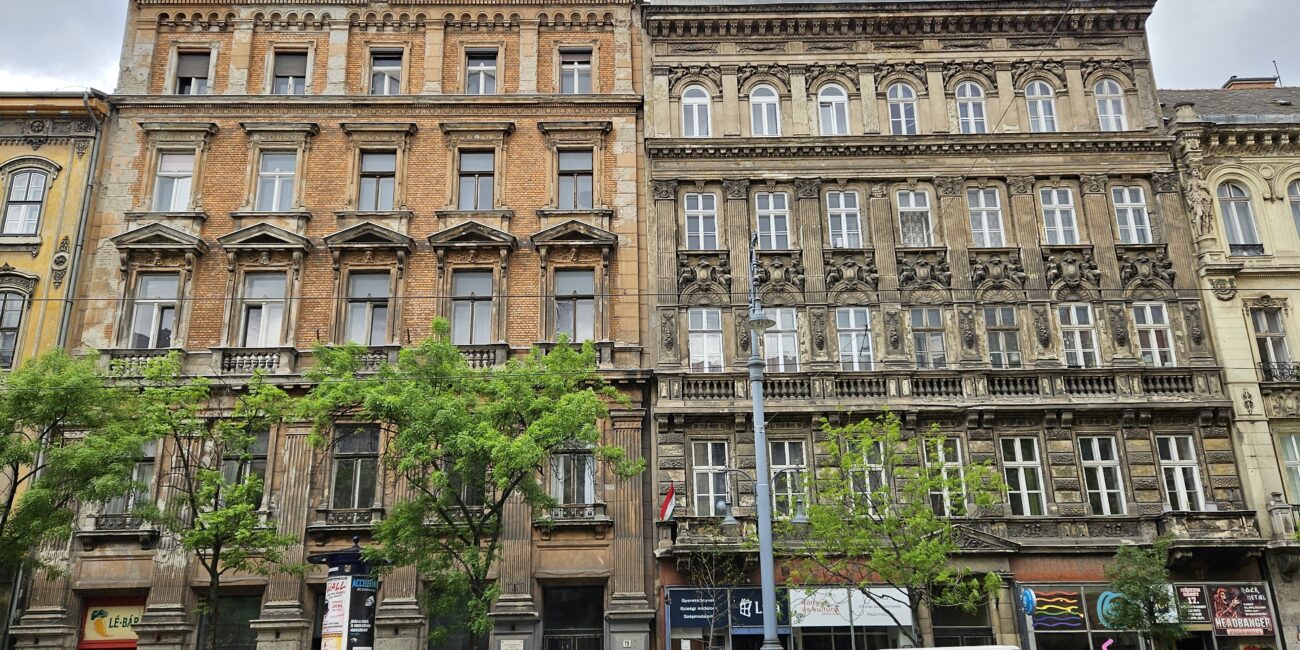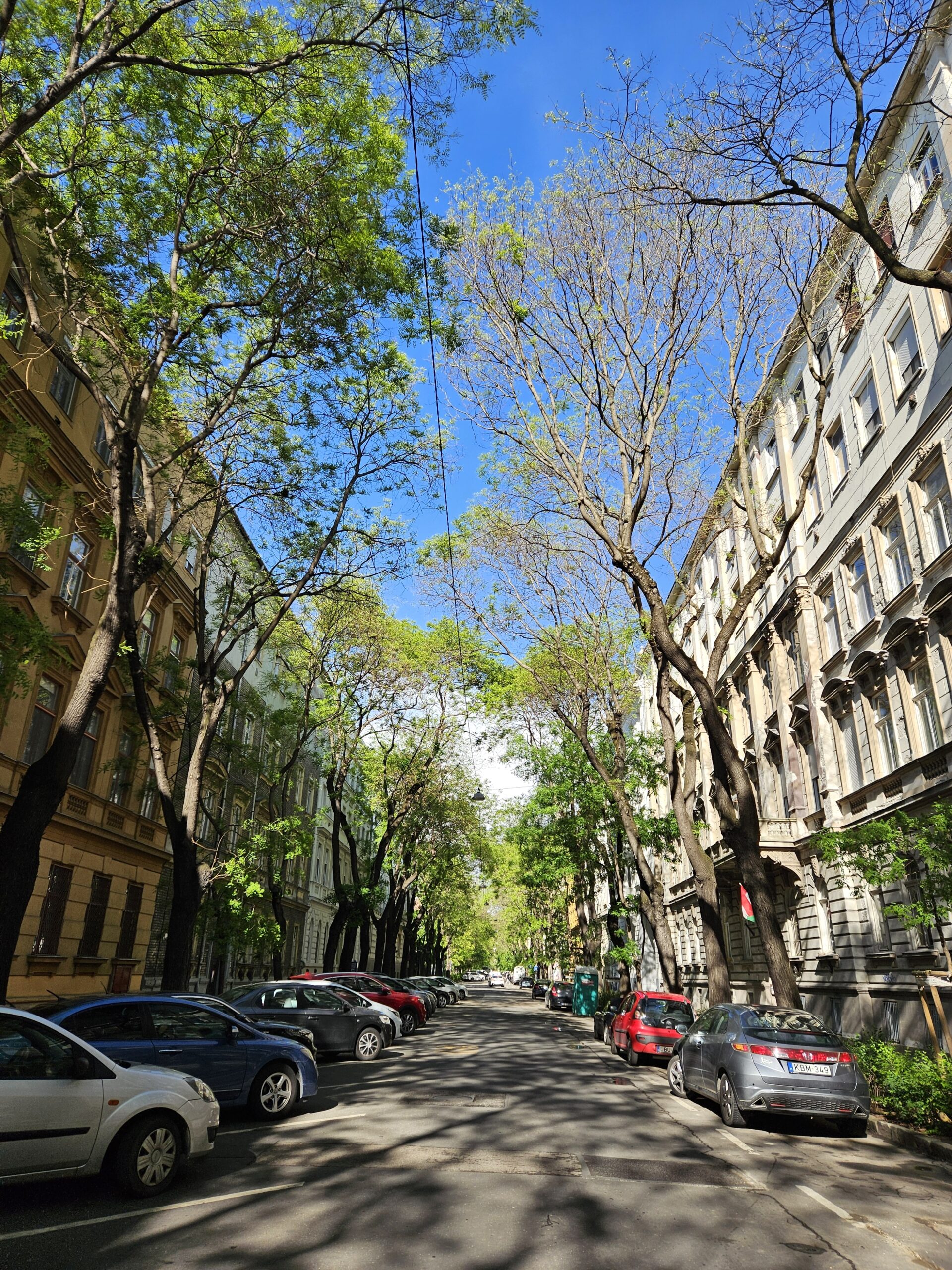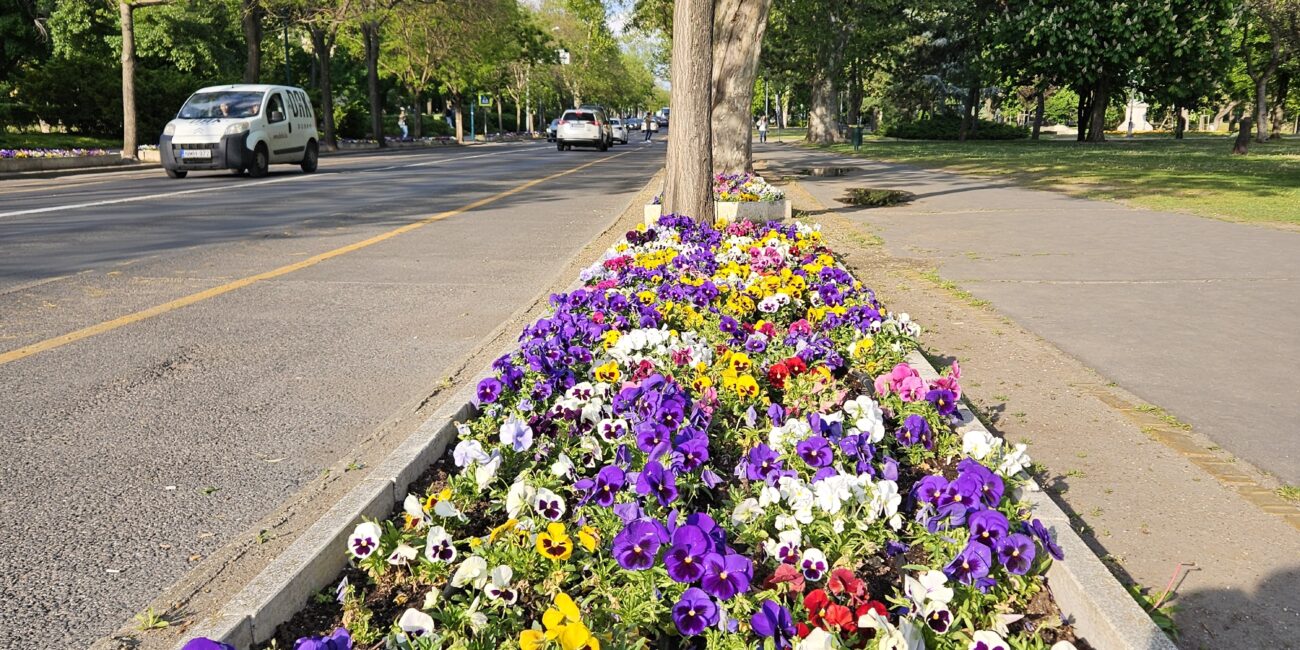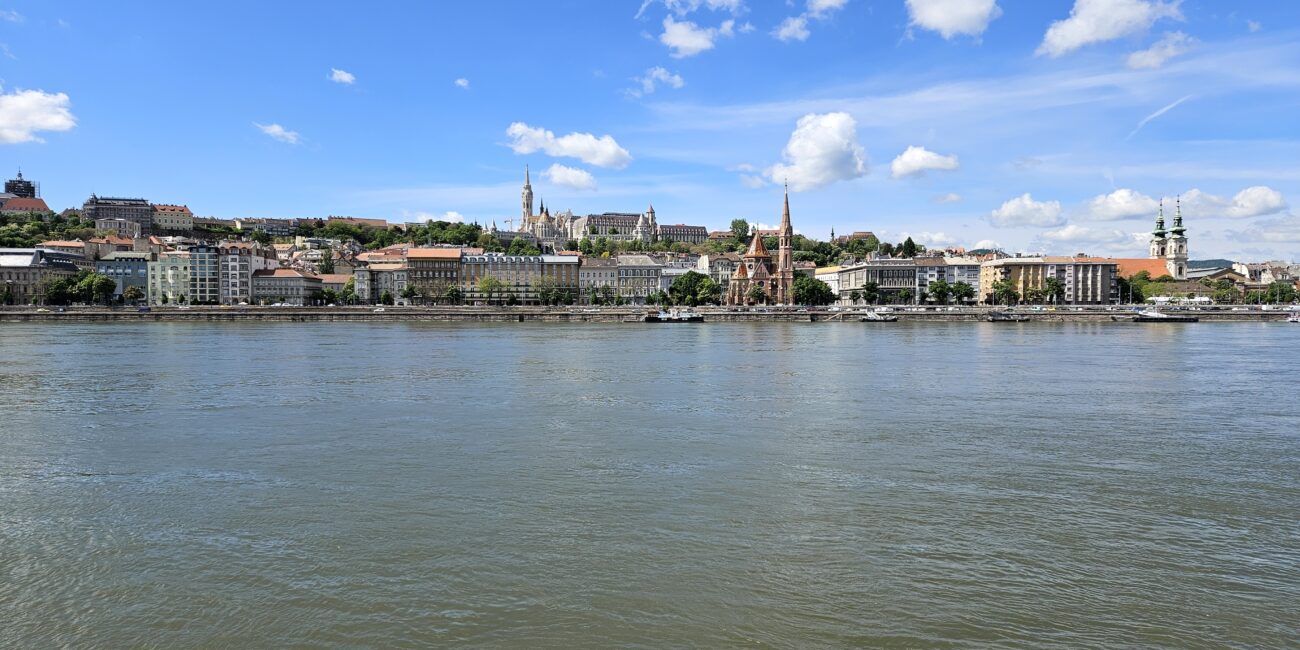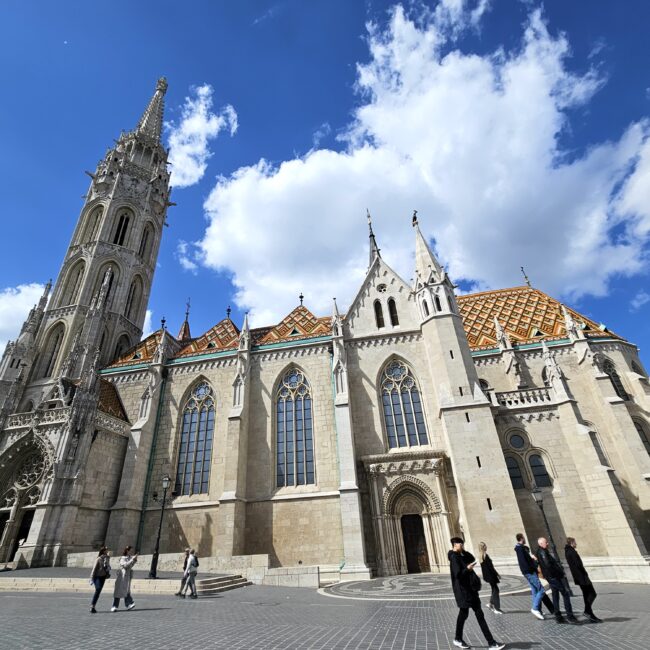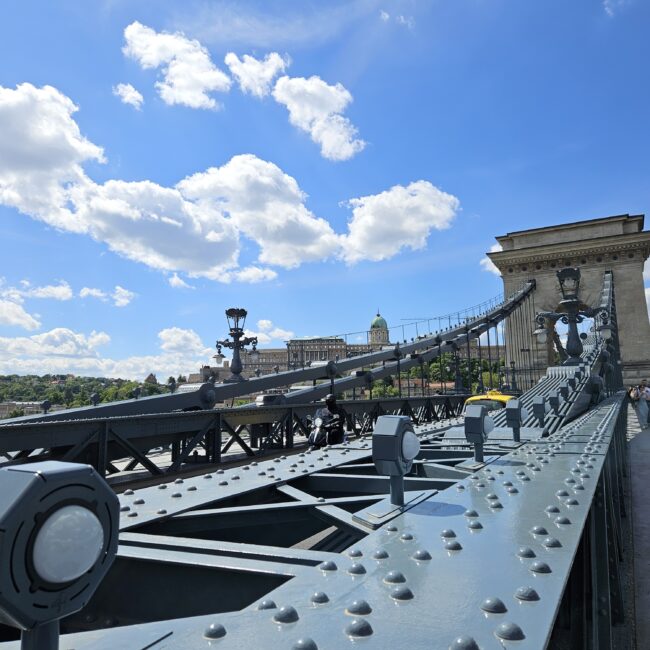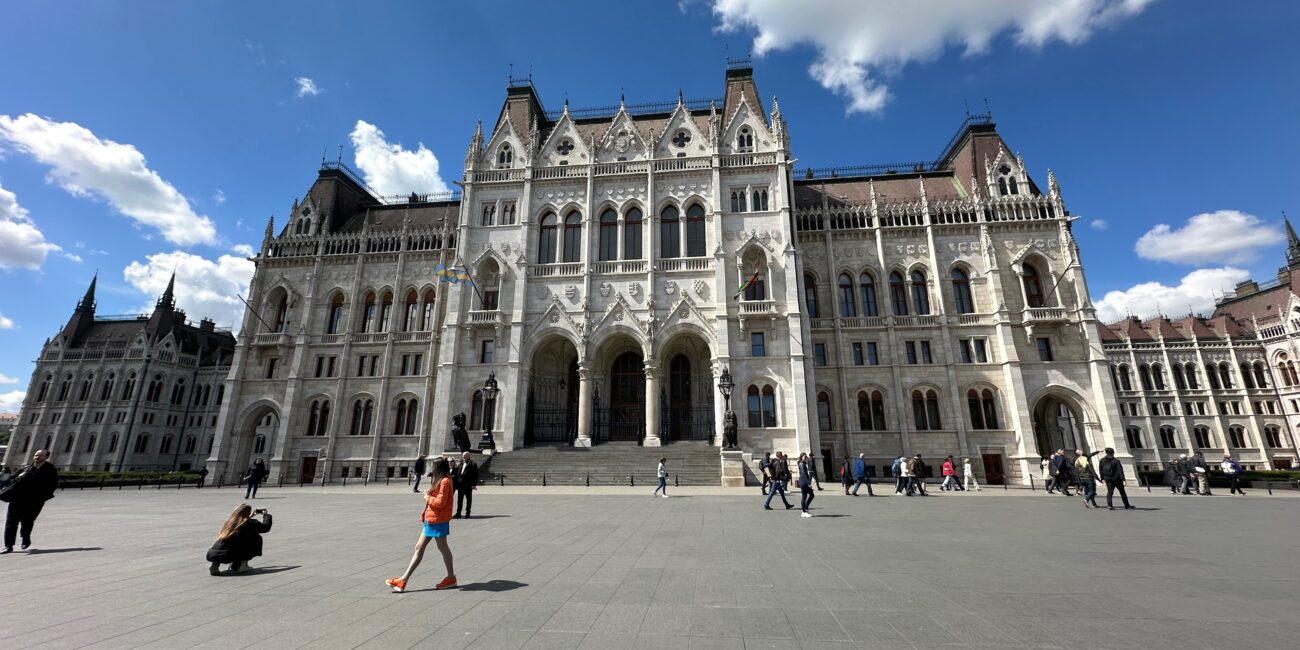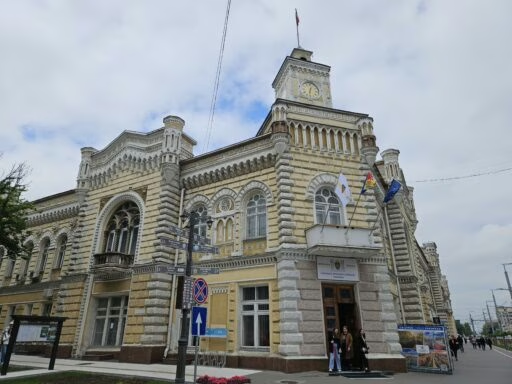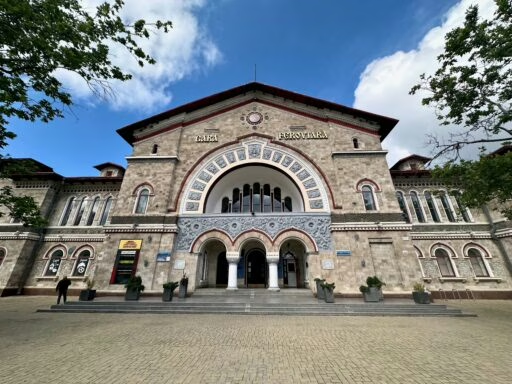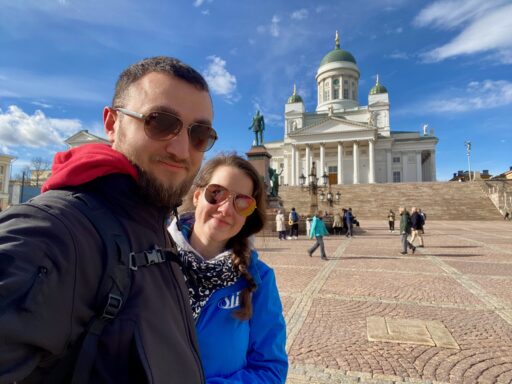This post is also available in:
Polski
Hello! 👋
In March 2024, we took a quick trip to Budapest. This time, the trip was quite spontaneous, so I decided to combine it with two days of remote work. This allowed us to explore the city a bit after work and over the weekend. A few days were enough to feel the vibe of Budapest, see the main attractions, and spend time by the Danube. It was an intense but enjoyable city break that helped us disconnect from our daily routine.
How did we get to Budapest?
We arrived in Budapest on a morning flight with Wizz Air from Warsaw. This was our second time using this route; previously, we traveled from Budapest to Saudi Arabia. Each time, the plane was fully booked, indicating the popularity of this connection. Like before, we opted to travel with only carry-on luggage, which helped us avoid extra fees. We also didn’t book seats next to each other because, given the short flight time—just a little over an hour—we didn’t find it necessary. We didn’t bother other passengers with requests to switch seats and managed to get through the flight comfortably separated.
The airport in Budapest did not leave the best impression on us. From our previous trip, we mainly remembered that during the night, when the airport was closed for several hours, it was hard to find a place to sit, let alone rest comfortably. The main hall does not offer enough seating, which can be a significant challenge for passengers with longer layovers. Fortunately, this time we didn’t have to worry about that, as our journey was quick and uncomplicated.
Bus to the city center
To get from the airport to the center of Budapest, several transportation options are available:
- 100E Line: The bus provides a direct connection between Budapest Airport and Deák Ferenc tér in the city center. It operates around the clock, with a travel time of approximately 40 minutes. Buses run every 6-10 minutes during the day and every 30-40 minutes at night. The ticket costs 2,200 HUF (about 28 PLN) and can be purchased at ticket machines or directly on the bus using a bank card through the Budapest Pay&GO service. Note that this ticket does not allow transfers to other forms of public transportation.
- 200E Line: The bus line connects Budapest Airport with the M3 metro line at Kőbánya-Kispest station. It operates 24 hours a day, running every 6-10 minutes during the day. The ticket costs 450 HUF (approximately 5 PLN), and the bus ride takes about 20-25 minutes. After that, it takes an additional 15-20 minutes to reach the city center by metro. This makes the 200E a convenient option for travelers looking to access Budapest’s public transport network.
- Taxi: Official cabs are available at terminals 2A and 2B. The starting fee is 450 HUF, and the cost of a ride to the center is about 7000 HUF (85 PLN). Prices are regulated, so it is advisable to use authorized carriers.
- MiniBUD minibuses: offer transportation to a selected address in the city. Prices start at HUF 2490 (about PLN 30) per person. Minibuses can be booked online.
Way back
We had our return flight scheduled for early morning, which meant we had to wake up at dawn. Our hotel was about a 30-minute walk from the starting stop of the 100E bus, so we decided that a morning stroll would be perfect to wake us up. Google Maps helped us check the exact departure time in advance, so we arrived without rushing. The bus arrived on time, and we had no trouble getting to the airport.
Everything went smoothly at the airport—check-in, a quick coffee, and soon we were on the plane. The flight passed without any disruptions, and we arrived in Warsaw as planned. The only “attraction” at the airport was my attempt to fix a malfunctioning KFC kiosk, which ended up completely freezing instead of coming back to life. My “help” resulted in awkward smiles from those around me. But at least the entire return journey went off without major complications. 😅
Documents and border crossing
When traveling to Hungary, there are a few key points to keep in mind regarding documents and border regulations:
- Identity Documents: As a Polish citizen, to enter Hungary, you only need a valid ID card or passport. It’s important to ensure that the document is up to date. Electronic versions of the ID card are not accepted when crossing the border. And no, a discount card from Carrefour won’t work either, unfortunately.
- Driving License: A Polish driving license is recognized in Hungary, so there is no need to obtain an international driving license. If you plan to rent a car, be sure to bring the physical driving license with you.
- Traveling in a vehicle that is not yours: If you plan to enter Hungary in a vehicle that is not your own (for example, one borrowed from a friend or a company car), you should have written authorization from the vehicle’s owner. It is advisable for this authorization to be prepared in multiple languages, including Hungarian or English, to facilitate any potential checks. For leased vehicles, it is also wise to have the leasing agreement or appropriate authorization from the leasing company on hand.
- Vehicle Insurance: When traveling to Hungary in your own car, you must carry proof of the validity of your third-party liability insurance (OC). Although Hungary is a member of the European Union and the Schengen Area, having a physical insurance document may be required during traffic checks.
Traffic conditions
When traveling to Budapest by car, there are a few important points to note regarding road conditions and parking:
Road tolls
Traveling on Highways in Hungary: Using highways and some express roads in Hungary is subject to tolls. To legally drive on these routes, you must purchase an electronic vignette (e-vignette) before entering the toll section. Vignettes are available in various time options: 10-day, monthly, and annual. The prices of the vignettes depend on the vehicle category and the selected validity period. For example, for passenger cars (category D1), a 10-day vignette costs approximately 56 PLN, while an annual one costs around 665 PLN.
Purchasing a vignette in Hungary is best done through the official website ematrica.nemzetiutdij.hu. The process is straightforward: you select the type of vignette, enter your vehicle’s registration number, and pay online. You will receive confirmation immediately, and there is no need to print the document, as checks are conducted electronically.
Avoid resellers when purchasing your vignette, as they often add commissions, which can increase the price by up to 50%. By buying directly from the official website, you save money and ensure the accuracy of the transaction. Remember to carefully check your vehicle’s details before finalizing your purchase. This will help prevent any issues during your travels on Hungary’s toll roads.
Car parking
In Budapest, parking is paid and depends on the zone. The most expensive, central zone A, costs 600 HUF per hour, and the cheapest, on the outskirts, 200 HUF. Fees apply during specific hours, usually from 8:00 a.m. to 6:00 p.m. or 10:00 p.m. They can be paid at parking meters (coins, card) or via mobile apps.
If you plan to leave your car for an extended period, private parking lots or hotels with parking spaces may be a better option. Avoid parking in unauthorized areas – cars are often towed away.
In the post about our trip to Bahrain 🇧🇭 we share a useful tip 🚗 where is the best place to park your car near the airport ✈️ – take a look here 📖!
Road condition
The road network in Hungary is well-developed and maintained, facilitating comfortable travel throughout the country. Highways, marked with the letter “M” followed by a number, connect Budapest with major cities and neighboring countries. For example, the M1 highway leads to Austria, the M3 heads eastward, and the M5 connects to Serbia. (Wikipedia)
National and local roads are generally in good condition, although their quality may vary depending on the region. In some rural areas, you may encounter narrower roads with poorer surfaces, so it’s advisable to exercise caution.
In cities, especially in Budapest, the road infrastructure is modern, but one should be prepared for the possibility of traffic jams during peak hours. The public transportation system is well-developed, providing an alternative to driving a car in the city.
Public transport
Public transportation
Budapest offers a comprehensive and efficient urban transport network, with buses playing a key role. The Budapest Transport Centre (BKK) is responsible for public transport organization, managing over 200 bus lines, including around 40 night lines. This extensive network ensures that residents and visitors can easily navigate the city and reach their destinations conveniently.
On most lines, boarding takes place through the front doors, where passengers must show a valid ticket or validate it at the ticket machine. Exiting is done through the other doors.
Subway
Budapest has an extensive subway network, consisting of four lines:
- Line M1 (yellow): Known as the “Millennium Underground”, it is the oldest subway line in Budapest and one of the oldest in the world. It connects Vörösmarty tér square with Mexikói út, running under Andrássy Avenue.
- M2 line (red): Runs from east to west, connecting Déli pályaudvar and Örs vezér tere stations. It crosses the Danube, connecting Buda and Pest.
- Line M3 (blue): Runs from north to south, from Újpest-Központ to Kőbánya-Kispest, serving the main areas of Pest.
- Line M4 (green): The youngest line, opened in 2014, connects Kelenföld vasútállomás and Keleti pályaudvar stations, crossing the city from southwest to northeast.
The Budapest Metro runs daily from about 4:30 a.m. to 11 p.m. The frequency depends on the time of day and the line, usually ranging from 2 to 15 minutes.
Ticket fare
A standard single ticket costs 450 HUF (approximately 5.25 PLN) and is valid for one trip without transfers. There are also time-based tickets available, such as a 30-minute ticket for 530 HUF (about 6.20 PLN) and a 90-minute ticket for 750 HUF (around 8.80 PLN), which allow for transfers within the specified time frame. Tickets can be purchased at ticket machines, kiosks, through the BudapestGO mobile app, or from the driver (though higher prices may apply in this case).
Recently, the Budapest Pay&GO system was introduced, allowing passengers to purchase and validate tickets using their bank cards. This system is currently available on the 100E bus line (Airport Express) and the M1 metro line. Passengers can simply tap their bank card on the validator to pay for their fare, streamlining the ticketing process and eliminating the need for prior registration or paper tickets. This innovation represents a significant step in enhancing the efficiency of public transport in Budapest. (BKK)
- On the 100E line, buses are equipped with Pay&GO devices at each entrance. To purchase and validate a ticket, you simply need to tap your payment card or mobile device on the reader. The system defaults to offering one ticket for purchase, but you can increase the number of tickets up to five by using the “+” button on the device’s screen. This streamlined process enhances convenience for passengers, allowing for quick and easy access to public transport services.
- On the M1 line, Pay&GO devices are located at the entrances of metro stations. The process of purchasing and validating a ticket is similar to that on buses—simply tap your card or mobile device on the reader to complete both actions simultaneously. This integration streamlines the fare payment process, allowing passengers to board quickly without the need for a separate ticket purchase.
Is there an Uber or Bolt here?
Uber has not been available in Budapest since 2016, when the company withdrew from the Hungarian market due to regulatory challenges. The local authorities implemented strict regulations requiring Uber drivers to obtain taxi licenses and comply with the same rules that govern traditional taxi services. In response to protests from Hungarian taxi drivers and the introduction of these new regulations, Uber decided to cease operations in the country.
An alternative is Bolt, but here, too, drivers must possess licenses, making this service similar to traditional taxis. Prices are regulated, so rides may seem more expensive. We had an interesting experience with Bolt—when we tried to order a ride for a short distance (about 3 km), drivers initially accepted the trip but then canceled the order upon learning about the short distance. This somewhat resembles situations with Polish taxi drivers who are reluctant to take short fares. It was only on our fourth attempt that we successfully completed a ride from the airport.
Accommodation
We stayed at Hotel Benczúr in Budapest, but we definitely do not recommend this place. The breakfasts, although in buffet form, were at best average. The reception staff was unfriendly and unhelpful. Additionally, the hotel incorrectly charged us a tax fee that should have been included according to the reservation description. After filing a complaint with the bank, we recovered our money, but the situation left a bad feeling.
The rooms were in a deplorable state. We chose the hotel for budget reasons, but the standard was far below expectations. The decor and furnishings seemed to be from the communist era, and the mattresses were uncomfortable. The bathroom looked like it was taken from a rural cottage from several decades ago. We definitely do not recommend this place if you are looking for even basic comfort.
SIM card
During our stay in Hungary, we did not use the services of Hungarian telecommunications operators—our Polish numbers worked without additional roaming charges. As always, we remind travelers that in EU countries, including Hungary, using the internet, making calls, or sending messages incurs no extra costs. This is due to the EU’s “roam like at home” policy, which allows users to utilize their domestic allowances for calls, texts, and data while traveling within EU member states.
However, it is worth checking the terms of your tariff, as although roaming is free under EU regulations, there are usually limits on data usage. This limit depends on the specific operator and the tariff plan. It’s a good idea to confirm how much data you have available to avoid unexpected charges for exceeding the limit. If you anticipate needing more data, consider purchasing a local SIM card, especially for longer stays. This can provide you with more flexibility and potentially better rates for data usage while in Hungary.
Food
During our stay in Budapest, we couldn’t resist trying the local specialties. We tasted lángos—a traditional Hungarian deep-fried flatbread served with various toppings such as sour cream, cheese, and garlic. While I found it to be just average, Jadzia was quite pleased with it.
In addition to that, we couldn’t resist visiting McDonald’s, which also made it onto our menu.
Hungarian cuisine is vibrant, aromatic, and based on simple, traditional ingredients. It is characterized by the extensive use of paprika, onions, and garlic, which give dishes their distinctive flavor and aroma.
Popular dishes include Hungarian goulash—a flavorful soup made from beef and vegetables, lecso—a one-pot dish featuring peppers, tomatoes, and sausage, and halászlé—a spicy fish soup. For dessert, you can try Dobos cake or Gundel pancakes filled with a nutty filling.
Exchange office or ATM?
During our stay in Hungary, as we always remind and encourage in our other posts, we used currency cards to withdraw cash from ATMs. This is a convenient and cost-effective solution that eliminates the need to search for exchange offices. In Budapest, there are particularly many Euronet ATMs, but it’s important to be cautious with them.
Local bank ATMs, such as those from OTP Bank and K&H Bank, typically do not charge additional fees for cash withdrawals, especially if you are using Mastercard or Visa cards. However, it’s always wise to check whether your bank imposes any fees for international withdrawals.
Euronet ATMs often charge higher fees, and their Dynamic Currency Conversion (DCC) feature offers currency conversion that can be unfavorable. Always choose to withdraw in the local currency (HUF) to avoid additional costs.
Climate and weather conditions
Budapest is located in a temperate continental climate zone, which means there are distinctly varied seasons. Spring (March-May) temperatures gradually rise from around 5°C in March to 20°C in May, although the weather can be changeable and rain may occur. Summer (June-August) is warm and sunny, with temperatures often exceeding 25°C, and on the hottest days, reaching even 35°C. Autumn (September-November) initially is pleasantly warm, but gradually becomes cooler, with temperatures dropping to 5-10°C in November, along with more frequent rainfall. Winter (December-February) is cold, with temperatures often falling below zero, although snow is rare.
During our March trip to Budapest, we experienced typical spring weather—cool mornings and warmer afternoons. Fortunately, there was no rain. It’s advisable to prepare for variable conditions by bringing both warmer clothing and lighter layers for the warmer moments.
Safety
Budapest is generally considered a safe city for tourists. During our stay, we did not encounter any threats. However, as in any large city, it’s advisable to take basic precautions.
Places we visited
During our short stay in Budapest, we managed to visit some unique places 🏰🌉. If you want to learn more about the attractions we visited, please visit our separate post ✍️. There we share our impressions and practical tips 🗺️!
Summary
Budapest made a very positive impression on Jadzia—it’s a city she would definitely like to return to. For me, as a lover of the Middle East, it was somewhat less exciting, but I admit that Budapest has its charm. It’s peaceful, a piece of Central Europe at its best, and another cup from Starbucks added to our collection.
Budapest serves another important role for us—it is an excellent base for travel due to the affordable flight prices with Wizz Air. This city will certainly appear on our itinerary again, even if just as a stopover. For this reason alone, it’s worth keeping it in mind when planning our trips.


